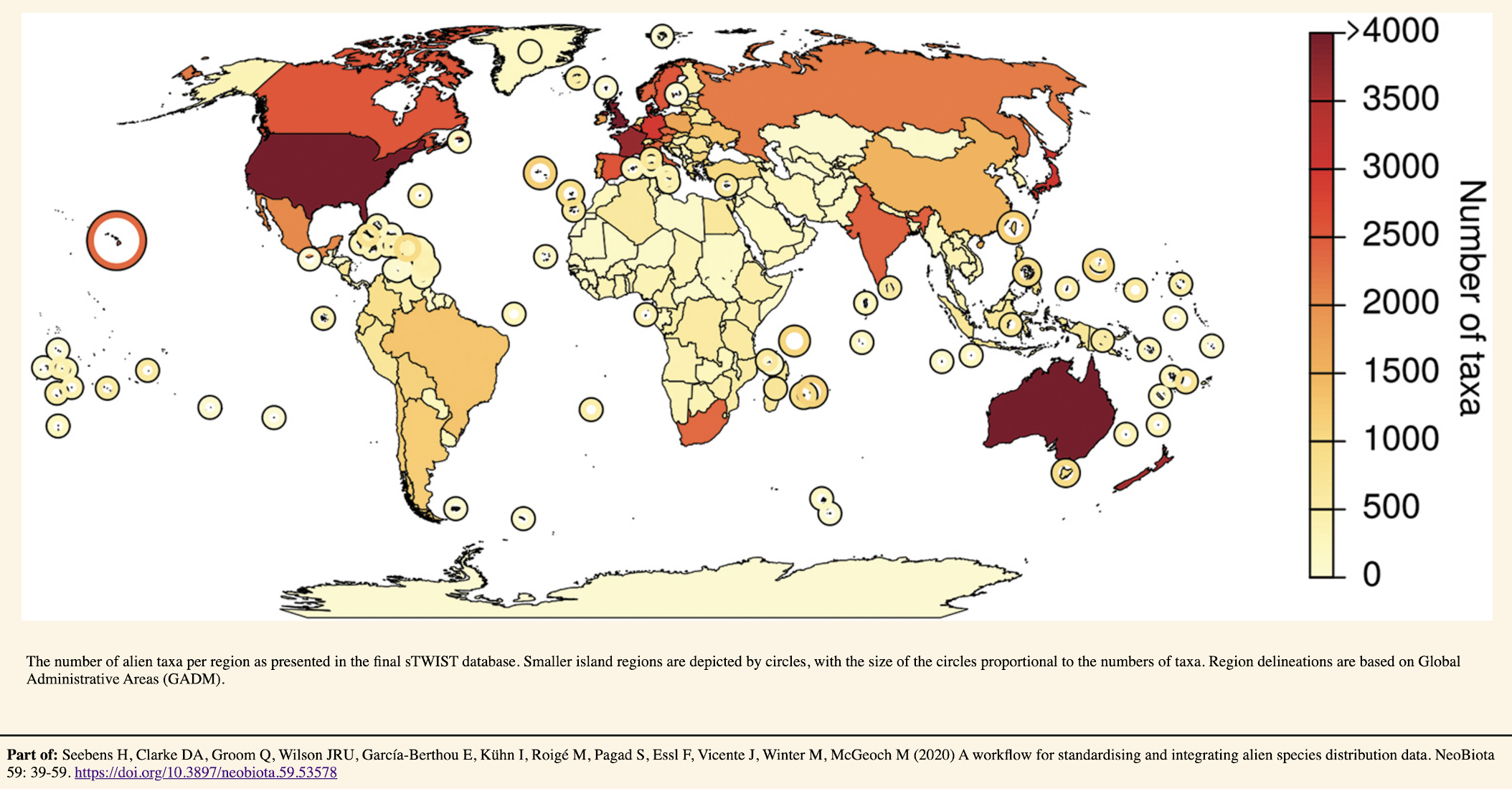There has been enormous progress over the last half decade in the collation and publication of global datasets on alien species distributions, for various plant and animal groups and in terrestrial and marine environments. One of the key hurdles that remains for the construction of Essential Biodiversity Variables for alien and invasive species is that the various data sources are not readily comparable and interoperable. Problems include for example the lack of a standard taxonomy and the use of different definitions, and inclusion and exclusion criteria for alien and invasive species. The recent publication by Hanno Seebens and colleagues* enables ready collation and integration of datasets on alien and invasive species occurrences by providing a flexible workflow that standardises terminology, location and taxon names and dates of first record – called SInAS (Standardising and Integrating Alien Species data). The value and flexibility of SInAS is shown in the paper using a case study integration of five widely available databases. SInAS is a key step in progress towards delivering species distributions as an Essential Biodiversity Variable for alien species that pose a threat to biodiversity.

This publication forms part of sDiv funded synthesis working group (sDiv is iDiv’s synthesis centre) – sTWIST (Theory and Workflows for Alien and Invasive Species tracking), and an activity in GEOBON’s Species Populations Working Group. Developing theory rich, synthetic workflows to deal with this highly policy-relevant problem and key threat to biodiversity is essential. The sTWIST collaboration is fast tracking progress to having a scientifically robust method for tracking invasions globally, by completing the conceptual and theoretical development that is an essential precursor for robust invasion indicators.
For more information on sTWIST visit and this collaborative effort see – https://www.idiv.de/stwist
See GEO BONs Species Populations Working Group activities at: geobon.org/ebvs/working-groups/species-populations
*Seebens H, Clarke DA, Groom Q, Wilson JRU, García-Berthou E, Kühn I, Roigé M, Pagad S, Essl F, Vicente J, Winter M, McGeoch M (2020) A workflow for standardising and integrating alien species distribution data. NeoBiota 59: 39-59. https://doi.org/10.3897/neobiota.59.53578
